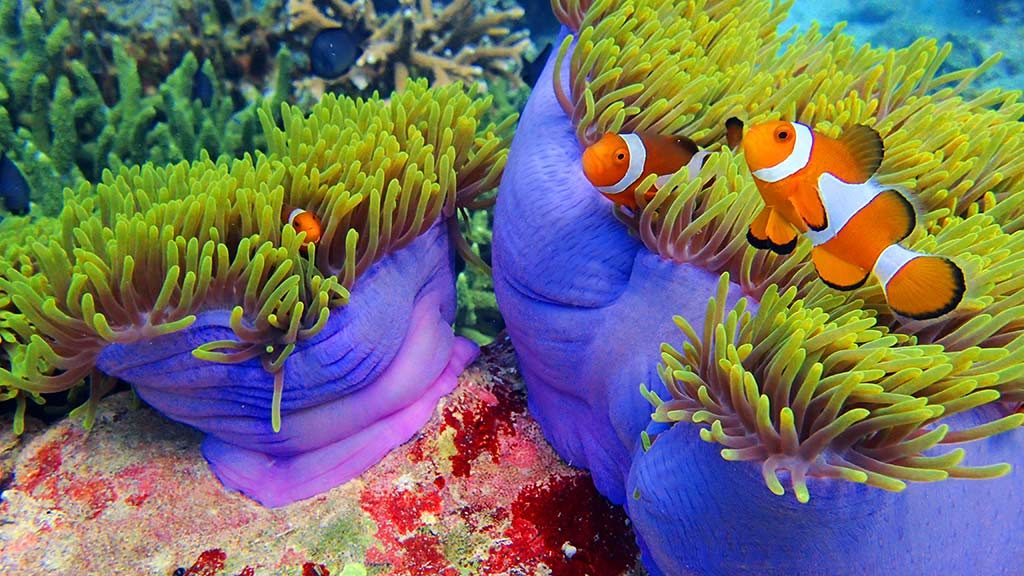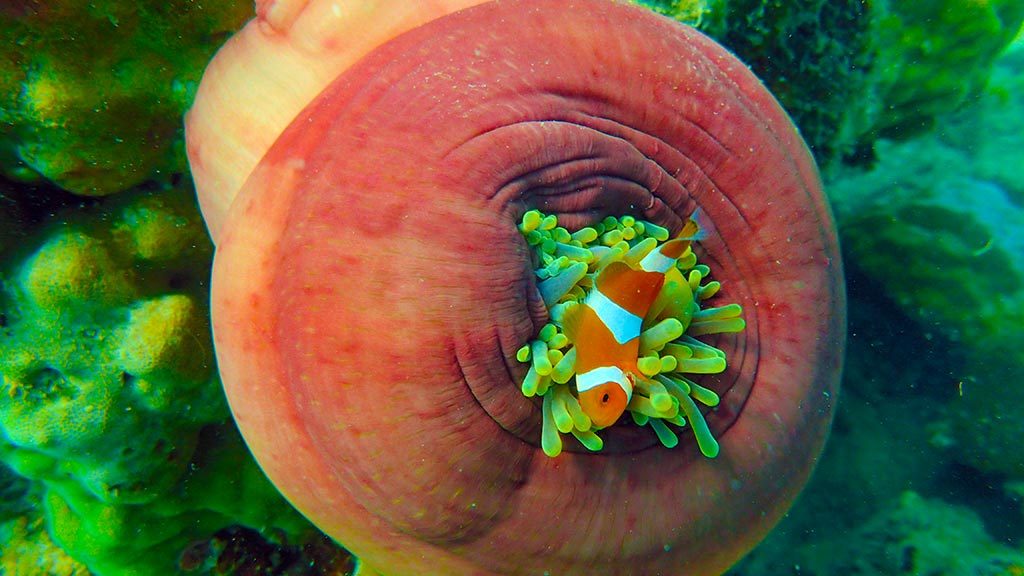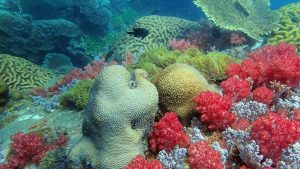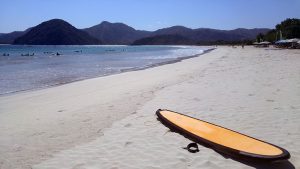
There’s more than one type of clown fish. Discover the amazing variety in our clown fish special!
Clown fish species and their anemone a special report!
There are over 50 different types of clown fish. They can be tiny and grow to quite a large size! They’re not all orange and white like in the film, Finding Nemo. Some are black, some are yellow and some are even red! On our various travels, we have been lucky enough to snorkel and dive in some clownfish hot spots.
Quick Index

Where to find clown fish
Unfortunately to see them, you’re going to have to travel. We see the most clownfish in Malaysian waters. The clear, calm, warm waters, make it a pleasure to float over these cute and colourful underwater dwellers.Hot spots closest to Europe are the Red Sea in Egypt. Some travellers we met recently said Turkey was good. J dived in Mexico off the Yucatan Peninsula. In Australia, the Great Barrier Reef is of course the place to go. Asian hot spots are Thailand, Indonesia and Malaysia. For the Americas, it’s Carribean waters and Mexico. The Indian Ocean also provides opportunities near the Seychelles, Madagascar and Maldives.

Clown fish have a symbiotic relationship with anemone, the floaty looking algae that clings to corals and rocks on the ocean and sea floor.


Lots of the anemone can be spotted, with their clownfish in these hard corals. Shaped like round ‘fish bowls’ they are a spectacular sight of bright purple, red, blue or green.


Clownfish Classification
Adult clownfish are classified depending on their colour patterns.
Group one – No vertical stripe.
Group two – one vertical stripe on the head.
Group three – two vertical stripes (one on the head, the other on the body).
Group four – three vertical stripes (one on the head, one on the body trunk, and the last one on the peduncle).
Group five – fishes having stripes polymorphism
Click here to learn more about clown fish classification and their scientific names.

Amazing clown fish facts
- The scientific name is Amphiprioninae – that’s quite a mouthful. We’ll stick with clown fish!
- The anemone that clownfish live in have poisonous tentacles but, they don’t affect the clownfish. The poisonous tentacles are to ward off other predators and protect the clown fish. Clownfish are not just cute, they’re smart too! They lure other fish towards the anemone with their beautiful, bright colours. The anemone then eats the other fish with its poisonous tentacles. Great teamwork!
- If a clown fish is born male, he has the potential to become a female as an adult! The biggest male in a large group will become female.
- Male clownfish cannot change back to female after the change has happened.
- Male clown fish look after the fertilised eggs.
- All clown fish are hermaphrodites. That means they are all born male and have the ability to develop into females, as an adult.
- Girl power – all clownfish groups are led by a dominant female.
- Clown fish live in groups in outer reefs and sheltered lagoons.
- Like all animal species, there is a hierachy of dominant male and female clown fish. The older the clown fish pair, the more dominant they are!
- Size matters! The bigger you are, the more dominant you are in your social group.
- Male clownfish can get aggressive at spawning time. They will bite the female!
- Female clownfish can lay thousands of eggs at a time. Yes, more clownfish in the seas and oceans!
- Eggs that are not fertilised or are damaged, get eaten by the male!



Clownfish like warm waters, but they can thrive in cooler waters too. By cool, we mean for the humans. On a lot of the Great Barrier Reef, you will need to wear a wet suit. The water is quite cool, about 20 to 21 degrees celcius.

On a recent trip to the Great Barrier Reef, we saw the orange and sky blue clownfish. You don’t need to dive to see this fish on the Great Barrier Reef. Most people on the day trip were snorkellers. Sometimes you get lucky snorkelling, as the snorkellers saw, a rare sighting of a single bumphead parrot fish. The divers on this trip to the Lodstone Reef, two hours from Townsville, did not. As with everything in Australia, it is huge!


What are you waiting for? Strap on that snorkel mask or wiggle your way into your wet suit and let’s make find some more Nemos!
If you have any photos you would like to share, we would love to see them. Get in touch via our contact us page and we will upload your pic onto this blog!

Popular Posts






